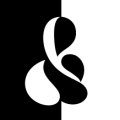Ed Ruscha Continues His Wordplay

Mike Duggan
Posts: 244
Artist as Type Designer.
Eventually, some of the words were written out in a typeface of his own invention, dubbed “Boy Scout Utility Modern,” which is used for the works in the current show.
http://www.nytimes.com/2016/11/04/arts/design/ed-ruscha-continues-his-wordplay.html?_r=0
Eventually, some of the words were written out in a typeface of his own invention, dubbed “Boy Scout Utility Modern,” which is used for the works in the current show.
http://www.nytimes.com/2016/11/04/arts/design/ed-ruscha-continues-his-wordplay.html?_r=0
0
Comments
-
Sorry but I find that the most boring place to visit. It's just text slapped on with muted color palettes and that large empty space. Some next level lazy minimalism.2
-
At least he got a show that was significant enough to be noticed by the New York Times. This brings notice to typography other than, "There are fonts for free in MS Word." Granted, art is not typography but typography can be art, even if we don't like the typography. I am glad for Ruscha and wish him well.2
-
@Chris Lozos you've helped me before with some of my stuff and presumably more experienced than I am but I disagree. I don't see how getting a show recognised by the nytimes as being good or worth anything, just because it's nytimes? Don't we appreciate things by good work anymore? There's scores and scores of stuff that's so good that isn't recognised by nytimes or whatever, but this doesn't stop us from appreciating it and I think that's what counts. If we have to bring notice to typography, then you need something creative that reflects that. No disrespect to Ed Ruscha(had no idea who he was till I read this post) but if his goal was to inspire people and make them aware of typography like you say, then he has miserably failed with this absolute 0 presentation skills. Seriously, if you asked your average joe about this work, they're more than likely going to tell you its just text on a boring background with nothing interesting going on, literally nothing. Let's take grillitype's recent launch of GT america, what sells? Presentation. they did a stellar job on the presentation that even your average joe with no type experience would actually think about buying it or in the least be inspired to look into it. This is akin to logos for instance, no matter how good the concept, clients sometimes cannot visually understand how well it works. So in order for them to get an idea you present it in the best manner possible using branding collateral. What we have here from Ed Ruscha is just plain boring that anyone who might have even considered typography as an interesting field may feel it's anything but interesting.0
-
But I do think it is good work. You clearly disagree and that is your prerogative; I have no problem with that. The problem with just being good work is that no one ever sees it if it never reaches the point of visibility. The problem with achieving visibility without being also good work is indicated by the Kardashian's saturation of media.3
-
Wow, I've never seen such disrespect towards Ruscha. From my experience, most people in design-related fields, let alone fine art, understand and appreciate his contributions. It's absurd to compare an artist of his pedigree and impact, to a type foundrie's typeface specimen presentation.0
-
I see your perspective though, Abi. If one is to look at Ruscha's work strictly through the lens of design and commerce, your argument is more reasonable. The world of fine art is its own universe though, and his work is coming from a place that is really far removed from what we do. I'd suggest doing some research on Ruscha with an intent on understanding his background and motives. At the same time, try to look at his work within the context of art history and the time he came into prominence, as well as the evolution of his work over the course of his career.3
-
Both Ruscha and Lawrence Weiner have eventually gotten around to making their own fonts for their art works. Barbara Kruger sticking with Futura!It's absurd to compare an artist of his pedigree and impact, to a type foundrie's typeface specimen presentation.
I don’t think so. I prefer type specimens, text-based art has always struck me as rather banal, as well as the ham-fisted execution. A better comparison, however, is with concrete poetry—which was the basis of Alastair Johnston’s Alphabets to Order.
0
Categories
- All Categories
- 46 Introductions
- 3.9K Typeface Design
- 487 Type Design Critiques
- 564 Type Design Software
- 1.1K Type Design Technique & Theory
- 656 Type Business
- 861 Font Technology
- 29 Punchcutting
- 520 Typography
- 119 Type Education
- 324 Type History
- 77 Type Resources
- 112 Lettering and Calligraphy
- 33 Lettering Critiques
- 79 Lettering Technique & Theory
- 558 Announcements
- 94 Events
- 114 Job Postings
- 170 Type Releases
- 179 Miscellaneous News
- 276 About TypeDrawers
- 54 TypeDrawers Announcements
- 120 Suggestions and Bug Reports



